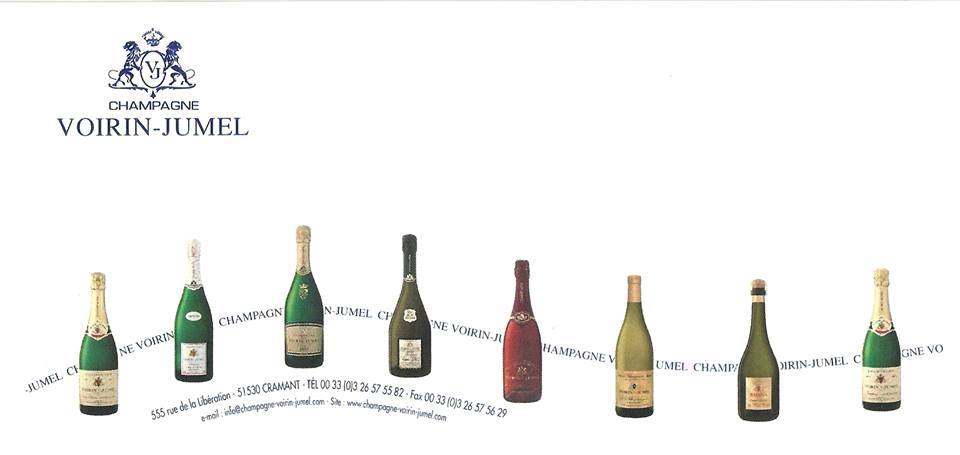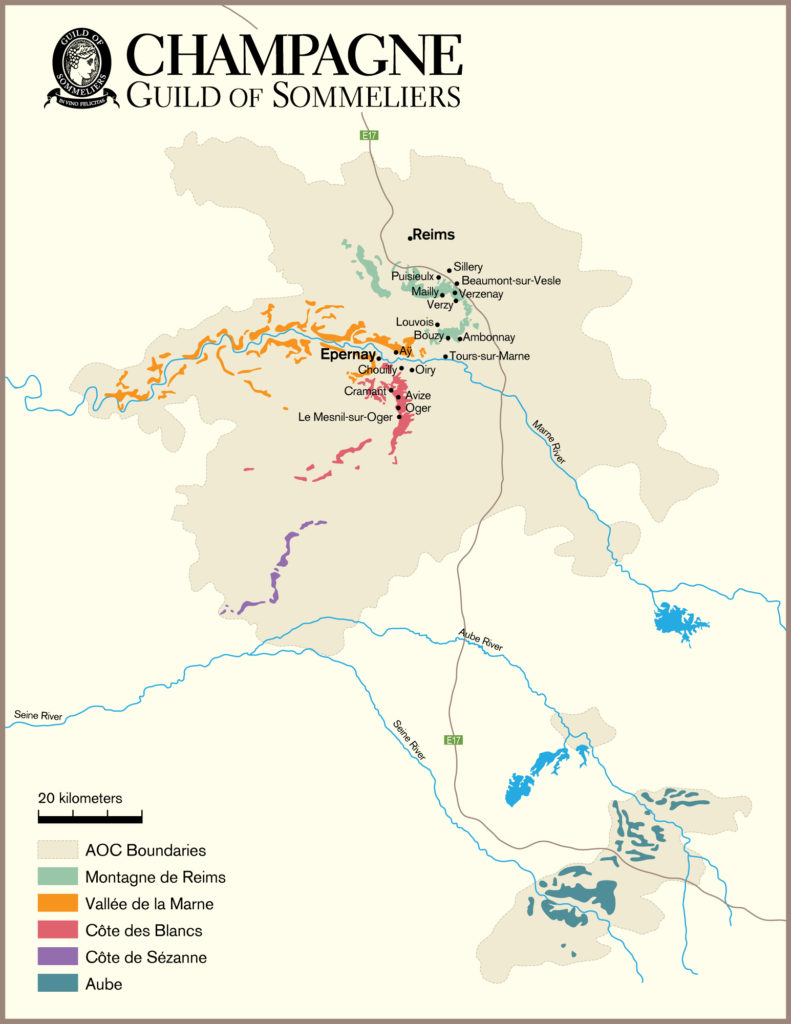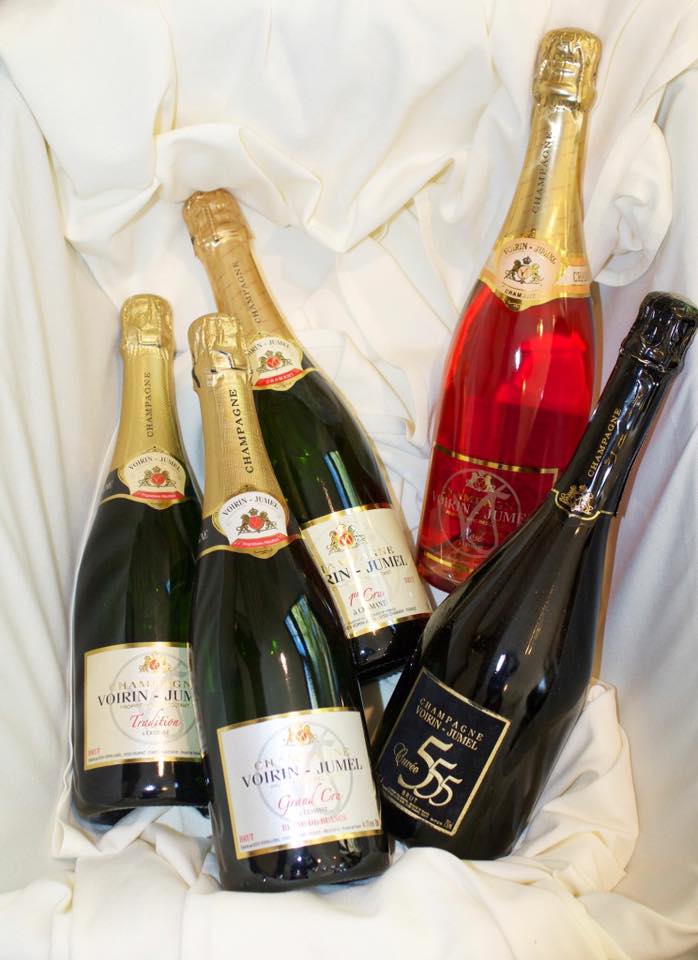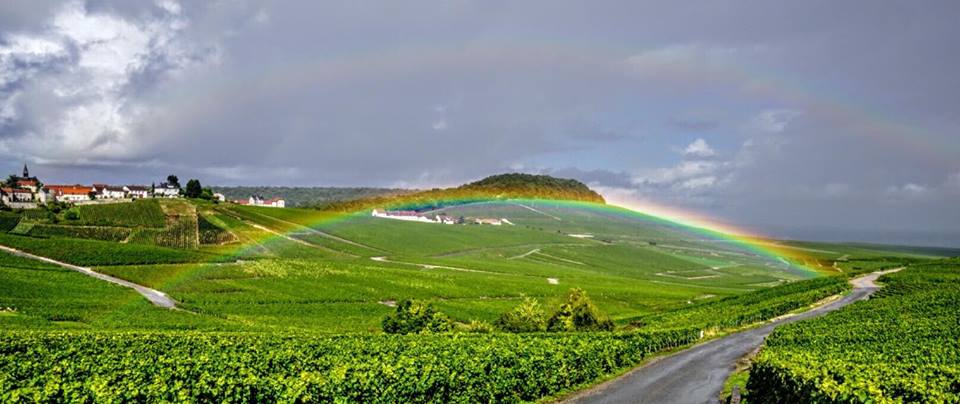Exciting, Enthralling, Elegant…..no other wine perhaps evokes as much emotion as Champagne. A shimmering sip of the infamous Bollinger Rose steered me on to the fascinating world of bubbles. From the 56 million bubbles give or take a few in each bottle, mineral-driven with acidity that lingers, making your mouth water, to the warm and rich brioche/biscuity aromas, Champagne is a timeless state of happiness in a glass, period.
A staunch advocate of local chef-driven restaurants, it comes as no surprise that we prefer to drink “grower Champagne”, endearingly labeled as farmer’s fizz in support of farmers who work the land. How can you tell if a Champagne is a “grower Champagne”? Check the front label of the Champagne bottle for “RM” – Recoltant Manipulant. RM denotes – ” I am a grower, who grows grapes in my vineyard, and I made the Champagne too.”
Recently we had the pleasure of an intimate tasting with the vivacious Ms. Alice Jumel of Voirin Jumel at the highly anticipated fine wine portfolio of Augustan Producer Tour 2016, under the umbrella of Breakthru Beverages.
Before we dive into our delightful tasting, first some fun facts of the seductive world of Champagne.
- True Champagne comes from only one region in the world, also called Champagne, north-east of Paris, France.
- Located along the 48th parallel, with a mean annual temperature of only 50°F, blending is essential to achieve consistency. All Champagnes are blends of thirty to sixty separate still wines, from across a decade of vintages.
- Only three grapes are authorized to produce Champagne. Chardonnay for finesse, Pinot Noir for aroma and structure, and Pinot Meunier for fruitiness. Non vintage Champagne use a combination of all three grapes, Blanc de Blancs utilize only Chardonnay, and Rose both the Pinots.
- 357 villages are authorized to grapes for Champagne with five main districts: Montagne de Reims, Vallée de la Marne, Côte des Blancs, Côte de Sézanne, and the Côte des Bars (the Aube).
- Méthode Champenoise – this painstaking, complex process that creates those tiny revered sparkling bubbles involving a secondary fermentation in the bottle, lasting up to eight weeks. (We shall explore this method in detail in another post).
Now to our favorite part, tasting and sharing grower Champagne Voirin Jumel, a staple in our humble cellar. Born in 1968 when Francoise Jumel began bottling champagne with her husband Gilles Voirin, creating the brand Voirin-Jumel. Alice and Patrick Voirin, brother and sister, took over the reigns from their parents in 1997. Today, Alice handles the business operations while Patrick manages its production.
Voirin-Jumel, located in the Grand Cru village of Cramant is a true testament to a singular belief that site and soil are Champagne’s true heart and soul. Today they own 11 hectares of vines in 11 different villages (10% Cramant, 20% Chouilly, 10% Avize, 5% Oiry, 10% Oger, 10% Mareuil-sur-Ay, 10% Vertus, 15% Verneuil and the remaining 10% in three other villages).
NV Brut Tradition: Easy on your palate and the wallet, Voirin-Jumel brut tradition is an equal blend of Chardonnay and Pinot Noir. Green apple, soft texture, a refreshing pick me up before a cocktail party or a formal meal.
NV 1er Cru Blanc de Blancs: And ideal food partner, the Voirin Jumel 1er cru is made from 100% Chardonnay exclusively from the village of Vertus, showcasing green apple, citrus, white flowers, with a fine mousse.
NV Blanc de Blancs Grand Cru: Composed of 100% Chardonnay from their most prestigious vineyards of the Cote de Blancs – Cramant, Chouilly, and Oger. An incredible value, highlighting the chalky minerality and crisp acidity best associated with grand cru blanc de blancs. It’s long and creamy finish is strikingly delicious.
NV Rose de Saignee: 100% Pinot Noir based Rose Champagne, explosive berry flavors, rose petals, vibrant acidity, intensely focused, rich with fine-grained bubbles, elegant like a string of pearls. Another ravishing contender for food pairing.
Saignee is a wine making process where the grape remains in contact with the skins, allowing the pigments of the black grapes to color the juice. After macerating the juices are bled off, hence the name.
NV Cuvee 555: Named for the estate’s home address at 555 Rue de la Liberation in the village of Cramant. It’s 100% Chardonnay (blend of 2005 and 2006), from the Cramant Grand Cru vineyard called Clos du Mardu. This was a sensational showing for oak-aged Champagne where Patrick cleverly utilizes old Burgundy barrels elevating the nuances of Champagne with a tickle of spice, candied lemon, toasted nuts, richness and complexity in each sip.
Personally for me Champagne is so much more than a simple toasting wine. Whether it’s sipping leisurely at Sunday brunch, or a quick perk me up at lunch, start of a delicious evening, or in my case a palate cleanser between those brutally long wine tastings (not that I am complaining). Throw in just about any cuisine in the world, it’s versatility is boundless. It makes one feel alive!!
To try Voirin Jumel and other farmer fizz, reach out to your local wine store. In Orlando between Wine Barn, Swirley, Vines, Wine Room, Tim’s Wine Market there are plenty of options to explore.
Until next time, have a delicious day!!
PS: Research conducted by Guild of Sommeliers and Karen McNeil’s Wine Bible.





